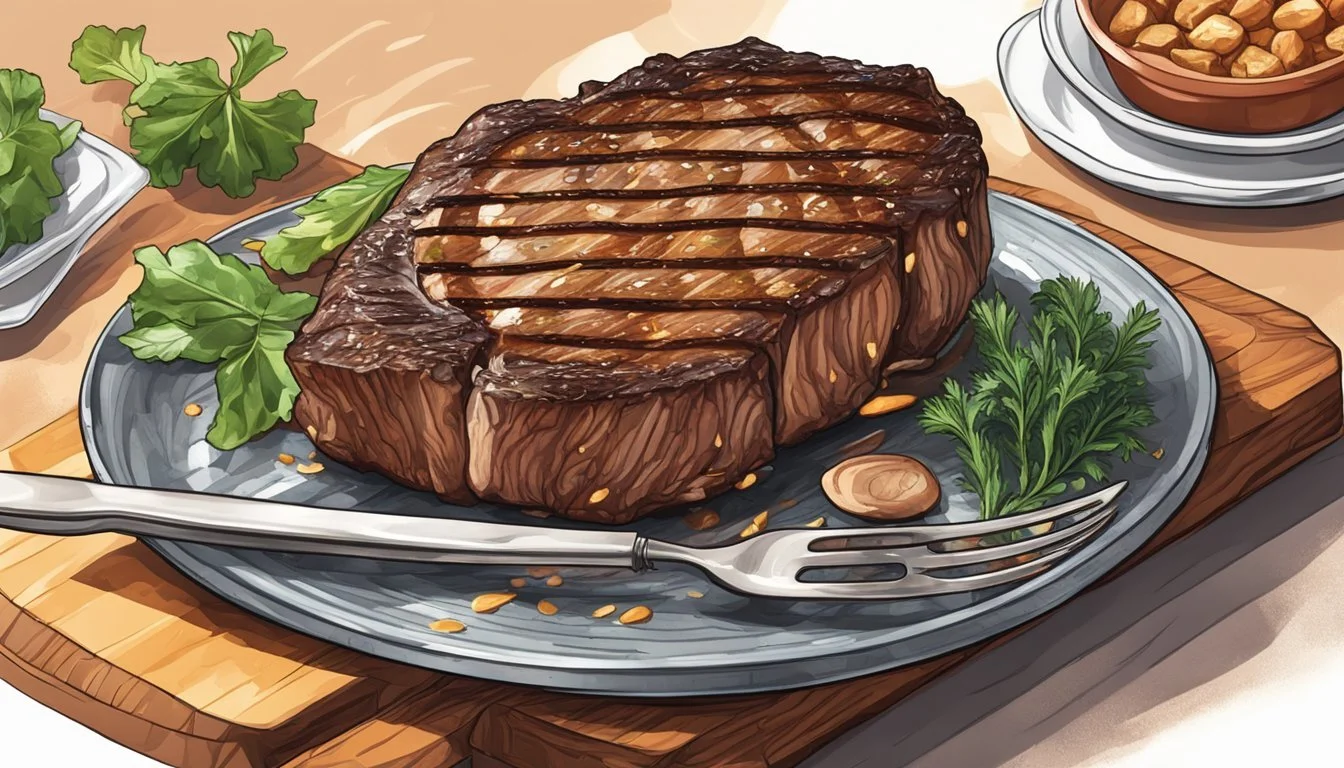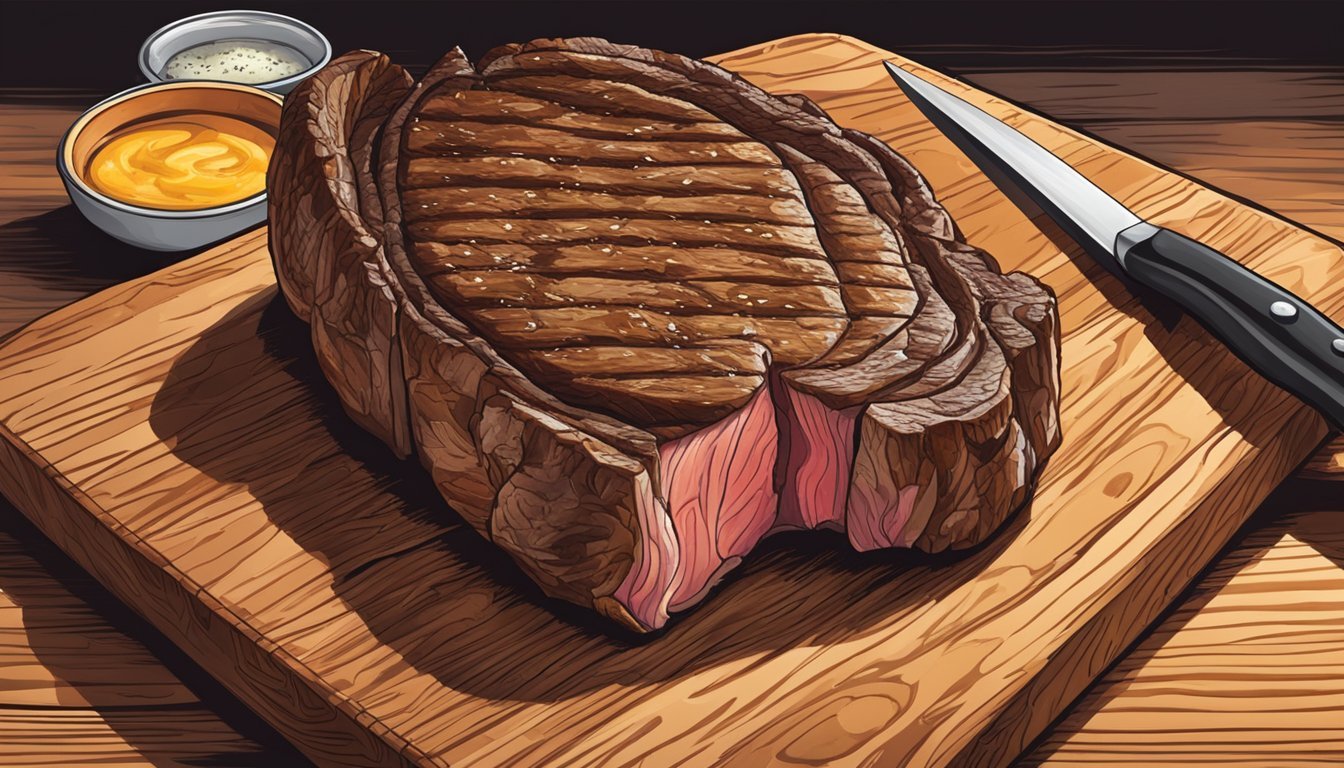Best Way to Reheat Ribeye Steak
Preserving the Perfect Marbling and Tenderness
Ribeye steak (What wine goes well with ribeye steak?) is prized for its rich marbling and supreme tenderness, traits that can be diminished if not reheated properly. Finding the best way to warm up this cut of beef is key in preserving its succulence and flavor. The optimal reheating method should ensure that the steak's moisture is retained while bringing it back to the desired temperature without cooking it further.
Warming a ribeye to perfection involves gently bringing it up to temperature. This can be achieved through methods that heat it evenly, such as in an oven set to a low temperature or in a skillet for a quick sear. These techniques help maintain the steak's moistness and tenderness, while avoiding any potential toughness or dryness that can occur with improper reheating.
It is essential to allow the steak to rest at room temperature before applying heat. This step is paramount in achieving an evening reheated steak, ensuring the warmth penetrates to the center of the cut. By exercising patience and careful attention to detail, one can successfully revive the ribeye to its former glory, making it nearly as enjoyable as when it was first cooked.
Preparing Ribeye Steak for Reheating
Proper preparation of ribeye steak leftovers is crucial for maintaining the steak's marbling and tenderness when reheating. Ensuring that the steak is adequately thawed and brought to room temperature can significantly enhance the reheating results.
Thawing and Bringing Steak to Room Temperature
Thawing Leftover Steak: If the ribeye steak has been stored in the freezer, one must first carefully thaw it to preserve its quality. It's recommended to transfer the steak from the freezer to the refrigerator and leave it overnight. This gentle defrosting method prevents the fibers from becoming tough.
Room Temperature: Once fully thawed, the ribeye steak should be brought to room temperature before reheating. Remove the steak from the refrigerator, unwrap it from any plastic wrap, and let it sit out for approximately 30 minutes. This step is pivotal as it allows for more even reheating, reducing the risk of overcooking the edges while trying to warm up the center.
Selecting a Reheating Method
Selecting the correct reheating technique is crucial for maintaining the ribeye steak's marbling and tenderness. The method chosen should ensure the steak is heated through without losing moisture, becoming dry, or losing its flavor and texture.
Oven Reheating Technique
To reheat steak in the oven, the oven method involves slow heating at a low temperature. Preheat the oven to 250 degrees Fahrenheit and place the ribeye on a wire rack over a baking sheet. This method circulates air evenly, preventing the steak from drying out. A juicy steak is achieved by heating to an internal temperature of about 110 degrees, usually for 20 to 30 minutes.
Stovetop Reheating Method
For a quick sear, the stovetop method is preferred, using a cast-iron skillet over medium heat. Adding a few tablespoons of beef broth can help retain moisture. It’s essential to flip the steak every few minutes to ensure even reheating and prevent the surface from drying out.
Sous Vide Reheating Approach
The sous vide method utilizes a sous vide machine to heat the steak in a water bath. This approach is precise and guarantees the steak reaches the desired temperature without surpassing it. A ribeye can be resealed in a plastic bag and submerged in the water bath, typically set to 130-140 degrees for about an hour for perfect tenderness.
Microwave Reheating Strategy
To reheat using the microwave method, opt for medium power. Set the microwave to 50% power and heat the ribeye in 30-second intervals, checking frequently. Cover the steak with a damp paper towel to maintain moisture. This method is suitable for rapid reheating, aiming for steak that’s warm but still retains a pink center.
Air Fryer Reheating Option
The air fryer method is ideal for those who prefer a crispy exterior. Preheat the air fryer to 350-400 degrees Fahrenheit before placing the steak in the air fryer basket. Reheat for about 3-4 minutes, until the desired level of doneness is achieved. This method provides a quick and efficient way to reheat steak while maintaining a delectable texture.
Ensuring Juiciness and Flavor Retention
When reheating ribeye steak, it's crucial to maintain the balance between warmth and moisture to preserve the steak's inherent juiciness and flavor. The ideal reheating technique can keep the steak tender and rich, reminiscent of its original state.
Allowing Reheated Steak to Rest
After reheating, allowing the steak to rest is an essential step. One must let the steak rest for about 5 minutes before slicing. This pause helps to redistribute and retain the juices within the steak, ensuring each bite remains succulent and flavorful.
Adding Moisture During Reheating
To prevent dryness and to keep the marbling of the steak intact, introducing moisture during the reheating process can be invaluable. A few methods to achieve this include:
Oven Method: Wrapping the steak in aluminum foil with a tablespoon of beef broth helps to reintroduce moisture without overcooking.
Microwave Method: Covering the steak with a damp paper towel while microwaving avoids moisture loss and uniformly reheats the steak.
Skillet Method: Reheating the steak in a skillet over low heat with a mixture of butter and garlic can enhance flavors while maintaining moisture.
Incorporating olive oil or garlic butter as a base during searing can also add an extra layer of flavor, aiding in developing a desirable crust while protecting the internal moisture.
Safety and Doneness
When reheating ribeye steak, one should prioritize safety and achieving the desired doneness to maintain the steak's marbling and tenderness. A reliable meat thermometer is crucial in this process.
Using a Meat Thermometer
A meat thermometer is an essential tool for safely reheating ribeye steak. It helps ensure that the steak reaches a temperature that is safe for consumption while also attaining the preferred level of doneness. Here's how to use it effectively:
Steps for Checking Internal Temperature:
Insert Thermometer: Gently insert the meat thermometer into the thickest part of the steak, avoiding fat or bone.
Check Temperature: Read the internal temperature to determine the level of doneness:
Rare: 120-130°F (49-54°C)
Medium Rare: 130-135°F (54-57°C)
Medium: 135-145°F (57-63°C)
Medium Well: 145-155°F (63-68°C)
Well Done: above 155°F (68°C)
Safety Considerations:
Resting Temperature: Remember, the internal temperature of the steak will continue to rise slightly after it is removed from the heat, a phenomenon known as carryover cooking.
Uniform Heating: Ensure the meat thermometer is used at different points to check for uniform heating throughout the steak.
By using a meat thermometer, one can confidently achieve the perfect balance of safety and desired doneness when reheating a ribeye steak.
Additional Tips for Optimal Results
Achieving the perfect reheated ribeye steak involves careful attention to minimizing moisture loss and enhancing the steak's inherent flavors and tenderness throughout the reheating process.
Preventing Drying and Toughness
To avoid a dried-out ribeye, one can employ several methods. Firstly, allowing the steak to reach room temperature before reheating reduces the total time needed for heating and helps prevent drying out. When using an oven, reheating at a low temperature, specifically around 250 degrees Fahrenheit, is crucial as it gently warms the steak without cooking it further. Placing the ribeye on a cooling rack over a baking sheet ensures that air circulates evenly around the meat, promoting consistent warming and retaining a crispy crust. If one is using a microwave, covering the steak with a damp paper towel can aid in retaining moisture. In both cases, patience is key; a gradual, gentle reheating process helps maintain the steak's texture and juiciness.
Enhancing the Reheating Process
Reheating a ribeye doesn't just have to involve heat. To enhance the steak's savoriness, consider adding a pat of butter on top of the steak before reheating, which can introduce additional moisture and flavor. For those opting to use the oven, covering the steak loosely with foil can prevent excessive drying while still allowing heat to penetrate. When striving for a crispy crust, after the steak has been adequately warmed through, one might briefly place it under a broiler for a minute or two, watching carefully to avoid burning. This step isn't essential for everyone but can add a pleasing texture contrast if desired. Throughout the reheating process, using a lid or cover strategically can help maintain the desired level of moisture.
Serving and Pairing Reheated Ribeye Steak
Once you've meticulously reheated your ribeye steak, ensuring it retains its marbling and tenderness, it's time to turn your attention to presentation and accompaniments that can elevate the reheated steak into a meal that feels freshly prepared.
Complementary Side Dishes
A reheated ribeye steak should be served with side dishes that complement its rich flavor and hearty texture. Here are some specific pairings:
Starches: A classic baked potato, seasoned with salt, pepper, and a dollop of sour cream, can match the steak's robustness.
Vegetables: Consider sides like grilled asparagus (What wine goes well with grilled asparagus?) or sautéed mushrooms that can stand up to the steak's strong flavor without overpowering it.
Creative Uses for Reheated Steak
Reheated ribeye doesn't have to be served as the traditional steak plate. It can be transformed into various dishes:
Tacos: Slice the ribeye thinly and serve it in corn tortillas with fresh salsa for a Mexican-inspired dish.
Fajitas: Pair strips of ribeye with sautéed onions and bell peppers, wrap them in a warm tortilla, and you have a flavorful fajita.
This section of the article caters to those who appreciate the fine balance between the preserved quality of a reheated ribeye and the creativity involved in repurposing protein-rich leftovers.




